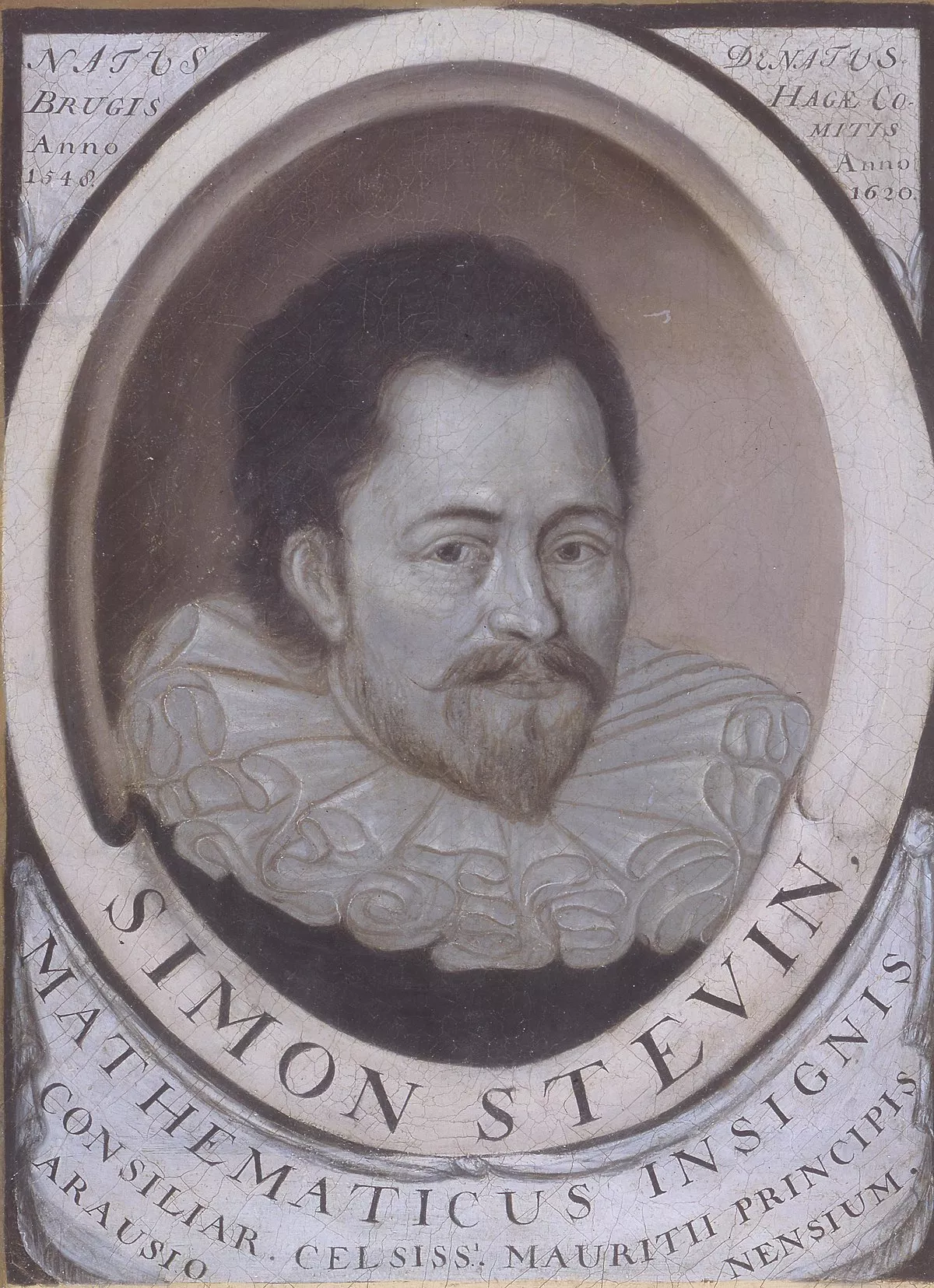 1.
1. Simon Stevin made various contributions in many areas of science and engineering, both theoretical and practical.

 1.
1. Simon Stevin made various contributions in many areas of science and engineering, both theoretical and practical.
Simon Stevin replaced the word chemie, the Dutch for chemistry, by scheikunde, made in analogy with wiskunde.
Simon Stevin's name is usually written as Stevin, but some documents regarding his father use the spelling Stevijn ; this was a common spelling shift in 16th-century Dutch.
Simon Stevin's mother, Cathelijne, was the daughter of a wealthy family from Ypres; her father Hubert was a poorter of Bruges.
Simon Stevin was likely educated at a Latin school in his hometown.
Simon Stevin left Bruges in 1571 apparently without a particular destination.
Simon Stevin was most likely a Calvinist since a Catholic would likely not have risen to the position of trust he later occupied with Maurice, Prince of Orange.
In 1577 Simon Stevin returned to Bruges and was appointed city clerk by the aldermen of Bruges, a function he occupied from 1577 to 1581.
In 1581 Simon Stevin again left his native Bruges and moved to Leiden where he attended the Latin school.
Simon Stevin is listed in the university's registers until 1590 and apparently never graduated.
Prince Maurice asked Simon Stevin to found an engineering school within the University of Leiden.
Simon Stevin moved to The Hague where he bought a house in 1612.
Simon Stevin married in 1610 or 1614 and had four children.
Simon Stevin wrote numerous bestselling books, and he was a pioneer of the development and the practical application of science such as mathematics, physics and applied science like hydraulic engineering and surveying.
Simon Stevin was thought to have invented the decimal fractions until the middle of the 20th century, when researchers discovered that decimal fractions had been previously introduced by the medieval Islamic scholar al-Uqlidisi in a book written in 952.
Simon Stevin's contemporaries were most struck by his invention of a so-called land yacht, a carriage with sails, of which a model was preserved in Scheveningen until 1802.
Simon Stevin received a patent on his innovation in 1586.
Simon Stevin's aim was to bring about a second age of wisdom, in which mankind would have recovered all of its earlier knowledge.
Simon Stevin deduced that the language spoken in this age would have to be Dutch, because, as he showed empirically, in that language, more concepts could be indicated with monosyllabic words than in any of the languages he had compared it with.
Simon Stevin was the first to show how to model regular and semiregular polyhedra by delineating their frames in a plane.
Simon Stevin concluded that the weights required were proportional to the lengths of the sides on which they rested assuming the third side was horizontal and that the effect of a weight was reduced in a similar manner.
Simon Stevin demonstrated the resolution of forces before Pierre Varignon, which had not been remarked previously, even though it is a simple consequence of the law of their composition.
Simon Stevin discovered the hydrostatic paradox, which states that the pressure in a liquid is independent of the shape of the vessel and the area of the base, but depends solely on its height.
Simon Stevin gave the measure for the pressure on any given portion of the side of a vessel.
Simon Stevin was the first to explain the tides using the attraction of the moon.
Simon Stevin appears to have been inspired by the writings of the Italian lutenist and musical theorist Vincenzo Galilei, a onetime pupil of Gioseffo Zarlino.
However, Simon Stevin was the first to recommend the use of impersonal accounts in the national household.
Simon Stevin brought it into practice for Prince Maurice, and recommended it to the French statesman Sully.
Simon Stevin wrote a 35-page booklet called De Thiende, first published in Dutch in 1585 and translated into French as La Disme.
Simon Stevin felt that this innovation was so significant, that he declared the universal introduction of decimal coinage, measures and weights to be merely a question of time.
Simon Stevin printed little circles around the exponents of the different powers of one-tenth.
That Simon Stevin intended these encircled numerals to denote mere exponents is clear from the fact that he employed the same symbol for powers of algebraic quantities.
Simon Stevin did not avoid fractional exponents; only negative exponents do not appear in his work.
Simon Stevin proved the intermediate value theorem for polynomials, anticipating Cauchy's proof thereof.
Simon Stevin uses a divide and conquer procedure, subdividing the interval into ten equal parts.
Simon Stevin's decimals were the inspiration for Isaac Newton's work on infinite series.
Simon Stevin thought the Dutch language to be excellent for scientific writing, and he translated many of the mathematical terms to Dutch.